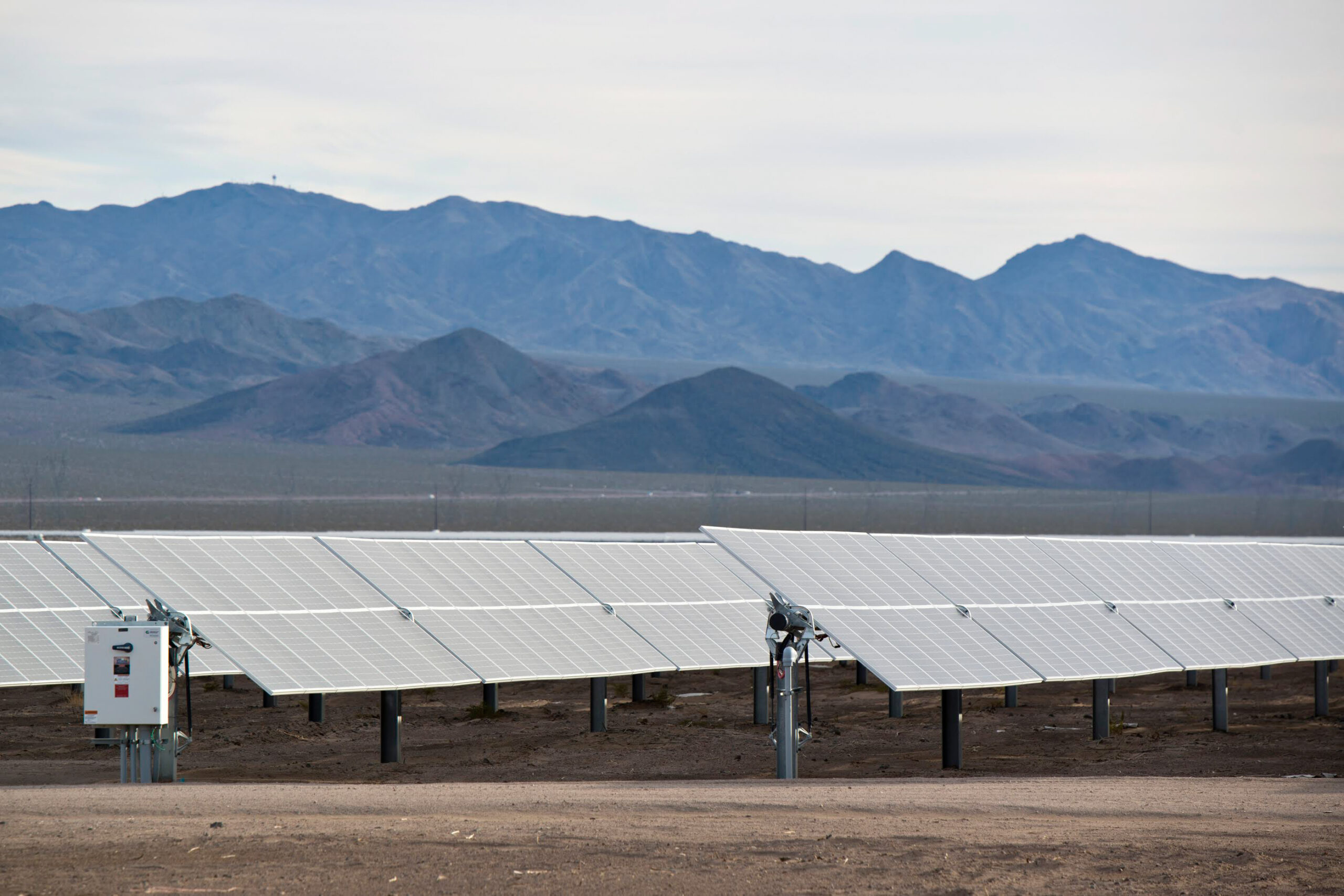Feds release updated plan to guide significant solar development in the West

Anywhere from 1.6 million to more than 18.3 million acres of land in Nevada have been identified as possible locations for large-scale solar development, according to a draft of a federal plan released Wednesday.
Six alternatives are outlined in the Bureau of Land Management’s (BLM) draft of its Western Solar Plan, a document guiding the siting of solar projects in the West, each earmarking different acreages that could be developed for utility-scale solar projects.
The plan is critical to Nevada, which lacks a statewide strategy to guide renewable energy development across the state’s 70.2 million acres. The BLM manages 48 million acres of land in the state, and, depending on which of the six options is selected, could open up more than 38 percent of that land to possible development. Currently, about 15 percent of the state land administered by the BLM is potentially open to solar development.
“If even a small fraction of that got built, it would be the most dramatic transformation of desert public lands since European colonization,” according to Patrick Donnelly, Great Basin director at the Center for Biological Diversity.
The original Western Solar Plan was released in 2012, two years after the BLM approved its first utility-scale solar project on public land. The original plan identified locations in Nevada, Arizona, California, Colorado, New Mexico and Utah with high potential and low resource conflicts for solar development.
The new plan extends solar development options on public land to five additional Western states. It is the first update to the plan in more than a decade.
Its release was announced by the Department of the Interior during a press call celebrating not only the plan, but the government’s forward momentum on multiple solar projects, including four in Nevada that will power hundreds of thousands of houses with renewable energy.
Nevada conservationists are less excited.
Instead of protecting valuable Nevada habitat, the new plan greenlights destructive sprawl on valuable public land, according to Kevin Emmerich, co-founder of Basin and Range Watch.
“This revision will end up sacrificing wildlife habitat, archaeology sites, lands with wilderness characteristics and valuable viewsheds in Nevada’s last outback,” he said in a statement emailed to The Nevada Independent.
According to the Department of Energy’s National Renewable Energy Laboratory and Argonne National Laboratory, the country needs roughly 700,000 acres of public land to meet the nation’s clean energy needs — a space nearly the size of Rhode Island.
The BLM has identified one of the six alternatives as its preferred option, which would offer up roughly 22 million acres of land nationwide for potential solar projects, including nearly 7 million acres in Nevada.
The original plan earmarked just over 60,000 acres across Nevada as suitable for solar development in designated “solar energy zones,” although only one of them, Dry Lake, northeast of Las Vegas, has been developed. An additional 6.86 million acres were marked in Nevada under the plan as variance zones — while not earmarked for solar, development on those acres was possible with a variance granted by the federal government.
The draft of the Western Solar Plan is open for a 90-day public comment period. The BLM estimates it will issue a final record of decision on the plan by December.
“We'll be pushing for a final plan that allows solar energy on public lands that can support it while protecting ecologically sensitive areas that plants and animals depend on for survival," Donnelly said in an email to The Nevada Independent. “The Biden administration has presented us with significant choices about the future of our public lands: Will we allow solar energy production basically everywhere or confine it to previously disturbed areas and other places it’ll do the least environmental harm? The latter is clearly the best course.”
Also on Wednesday, the BLM announced the advancement of four sizable solar projects in Nevada.
A draft environmental impact statement was released for the Libra Solar Project in Mineral and Lyon counties. If approved, the project will generate and store up to 700 megawatts of energy. The project could power more than 212,000 houses.
A draft environmental impact statement was released for the Rough Hat Clark County Solar Project, which could add 400 megawatts of energy. The project would also include a 700-megawatt battery energy storage system and could power more than 121,000 houses.
A draft environmental assessment was released for the Dry Lake East Energy Center Solar Project northeast of Las Vegas, which would build a 200-megawatt facility with 600 megawatts of battery storage.
A notice of intent was announced for the Dodge Flat II Solar Project that could generate up to 200 megawatts of energy on approximately 800 acres in Washoe County. The project could power more than 60,000 homes.
